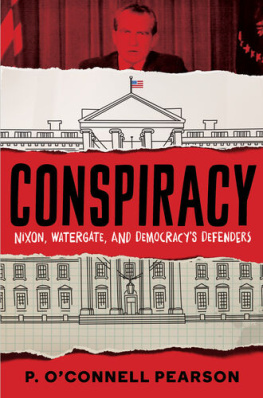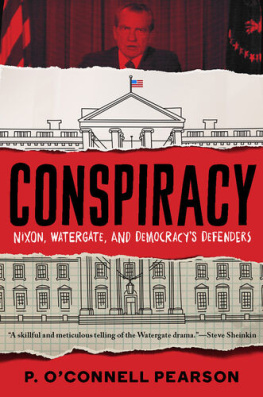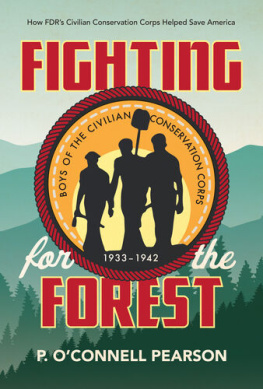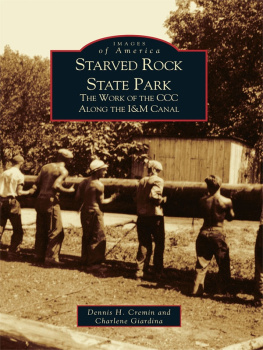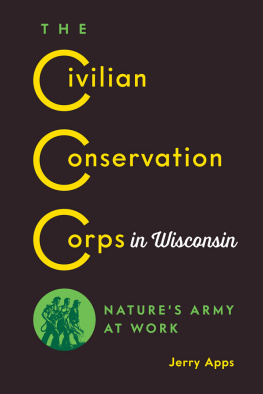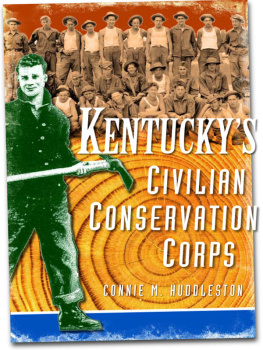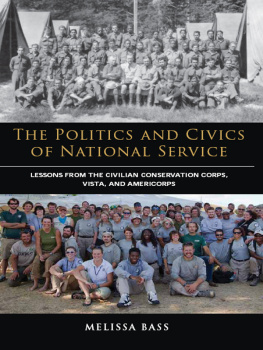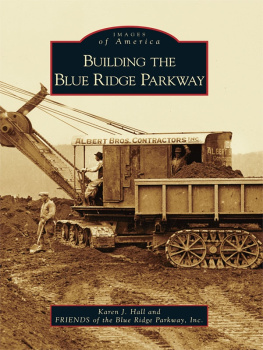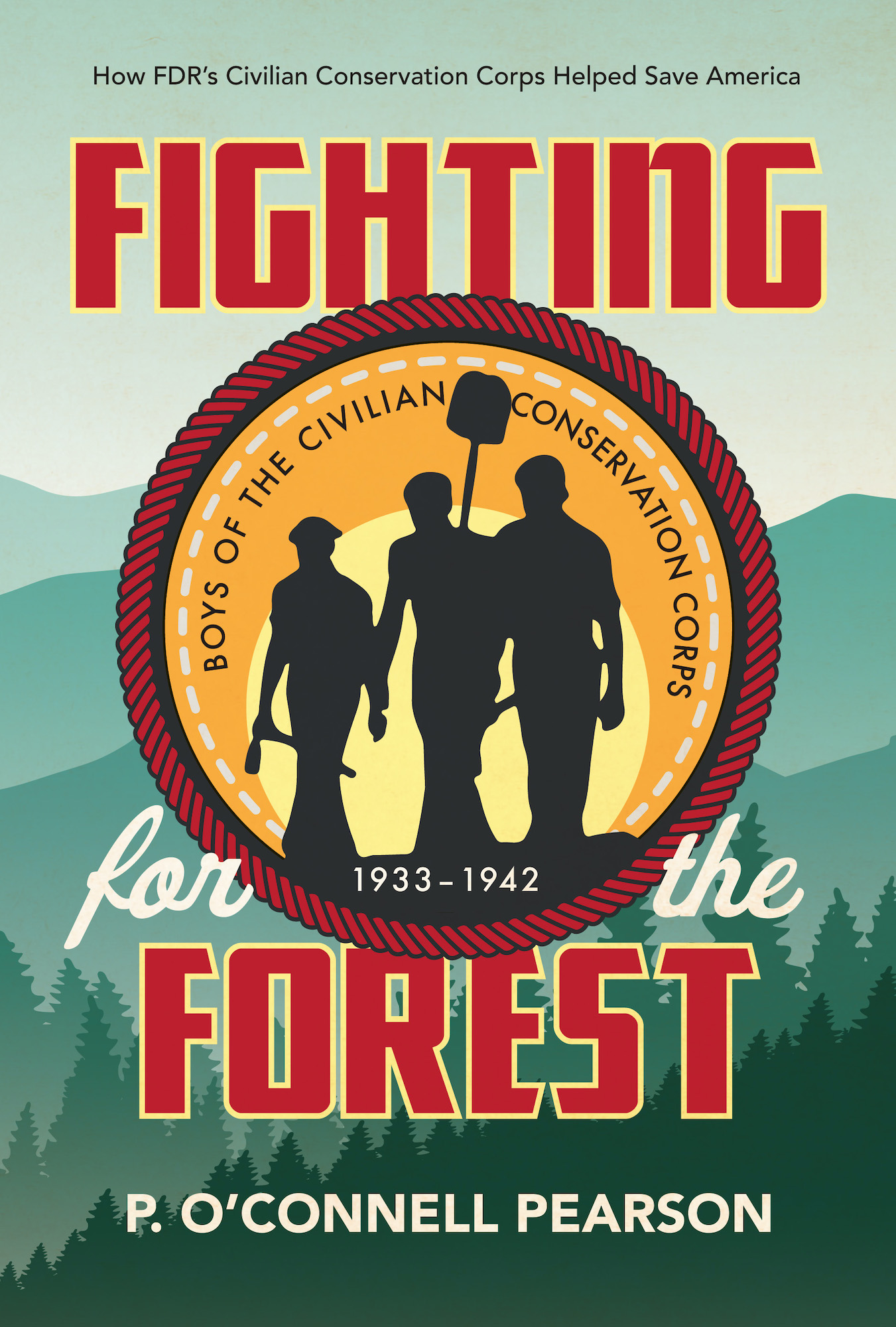Contents
Guide
Also by P. OConnell Pearson
Fly Girls

SIMON & SCHUSTER BOOKS FOR YOUNG READERS
An imprint of Simon & Schuster Childrens Publishing Division
1230 Avenue of the Americas, New York, New York 10020
www.SimonandSchuster.com
Text copyright 2019 by Patricia OConnell Pearson
Jacket illustrations adapted from photographs courtesy of National Archives College Park and copyright 2018 by iStock
Interior photographs on pp. courtesy of the National Park Service
All rights reserved, including the right of reproduction in whole or in part in any form.
SIMON & SCHUSTER BOOKS FOR YOUNG READERS
is a trademark of Simon & Schuster, Inc.
For information about special discounts for bulk purchases, please contact Simon & Schuster Special Sales at 1-866-506-1949 or .
The Simon & Schuster Speakers Bureau can bring authors to your live event.
For more information or to book an event, contact the Simon & Schuster Speakers Bureau at 1-866-248-3049 or visit our website at www.simonspeakers.com.
Jacket design by Greg Stadnyk
Interior design by Hilary Zarycky
Library of Congress Control Number: 2019946435
ISBN 978-1-5344-2932-1
ISBN 978-1-5344-2934-5 (eBook)
For Paul
ACKNOWLEDGMENTS
My fondness for the Civilian Conservation Corps goes back to my earliest visits to Shenandoah National Park in Virginia many years ago. Doing the research for this book reinforced my affection for the young men who served in the CCC and increased my admiration for the program and the people responsible for it. I appreciate all those who are working today to preserve the Civilian Conservation Corps legacy, including the National Association Civilian Conservation Corps Alumni, the Civilian Conservation Corps Legacy, and the Living New Deal, as well as the men and women who work for the National Park Service, the United States Forest Service, and the various state park and forest systems.
A heartfelt thanks to my dear friend Doris Wilson Rosenberg, who so generously shared her father Woodys stories, pictures, and documents; and to mentor and friend Susan E. Goodman, who saw me through the first draft of the book at Lesley University with expertise and enthusiasm. Thanks also to my editor at Simon & Schuster, Liz Kossnar, for her encouragement and keen eye; copy editor, Valerie Shea, for an outstanding job; and Greg Stadnyk, for a cover that captures the CCC perfectly. I am also indebted to Chief Historian for the US Forest Service Lincoln Bramwell, PhD, who readily shared his time and knowledge.
Finally, I am forever grateful to the friends and family who allow me to go on and on with every new thing I learn in the research process and who are always willing to ask me how the writing is going. My gratitude and love especially to my children and grandchildren and to my husband, Paul, whose support is endless.

FDR (right) and Herbert Hoover (left) en route to the US Capitol for Roosevelts inauguration in 1933.
CHAPTER 1 Waiting for Hope

O n the gray, cold morning of March 4, 1933, Franklin Delano Roosevelt woke in his room at the Mayflower Hotel in Washington, DC. This was a big day, perhaps the biggest day of Roosevelts life. But he started the morning the same way he had for years at home in New Yorkhe ate breakfast in bed. Roosevelt wasnt lazy, not a bit. As governor of New York, he had often worked while he atereading newspapers and going over important documents. Then a personal aide would take away the breakfast tray and lift Roosevelt from the bed to a wheelchair and help him use the bathroom. FDR was used to this morning routine, used to having someone help him with the most basic things. His legs had been completely paralyzed for nearly twelve years.
Once the aide helped him into his underthings, Roosevelt strapped on the metal braces that allowed him to stand up for short periods of time. Though the braces were heavy and uncomfortable, they were frequently part of FDRs routine. On most days, Roosevelt wore a business suit. But on this morning, he chose formal striped trousers and a morning coat. After all, at noon Franklin Delano Roosevelt would be inaugurated president of the United States.
Meanwhile, in Herndon, Virginia, twenty-five miles west of Washington, Woody Wilson started his own morning routine. It was nothing like Mr. Roosevelts. The walk from Woodys back door to the outhouse could be frigid on such a damp day, but he was used to it, never having had an indoor toilet. He was also used to wearing the same worn clothes day after day, because that was all he owned. Eighteen-year-old Walker Woodrow Wilsonnamed for President Woodrow Wilson, who was in office when he was bornlived with his parents in the small house his father had built. He would have liked to be out on his own like his five older brothers and sisters were, but he didnt see a way to do it. Woody was stuck with no money, no job, and no place to find work. Hed quit school five years earlier at the end of eighth grade and found temporary jobs here and there for a while. But for the last three yearswell, the economy had been in ruins. Woody couldnt even find enough work to help his parents buy food for the three of them, and it hurt to feel useless, especially with his father unemployed.
Thomas Wilson, Woodys dad, had worked for years on the railroad that collected milk from dairy farms in Virginias hilly countryside and delivered it to the dairies that processed it in and near Washington, DC. Back and forth, every dayhundreds of gallons of milk. But people could no longer afford to buy all that milk or any of the other factory and farm goods that trains hauled. As a result, Tom Wilson lost his job. And he wasnt alone.
All over the United States, thousands and thousands of men and women faced unemployment as the big spending of the 1920s slowed and the economy slid into a depression: a depression that had worsened every day for three years. How had it happened?
Economic depressions are like the flu: contagious. Suppose a factory closes and the workers lose their jobs. Since they dont have money coming in, they stop buying new clothes. After a while the clothing stores go out of business and those workers lose their jobs. The factory workers and the clothing store workers stop going to restaurants. Pretty soon the restaurants close and those workers lose their jobs. The spiral widens and widens, pulling everything down with it, like water swirling into a drain.
There had been depressions before, but none like the one that started in 1929 and became known as the Great Depression (great meaning huge, not wonderful). The stock marketwhere people can buy small pieces, or shares, of businesses in hopes of making a profit when they sell their shares laterhad crashed. Instead of growing, businesses failed and the shares many people had spent their savings on were now worthless. Banks collapsed and lost their customers savings. Thousands of factories went bankrupt, leaving their workers without jobs. As everything fell apart, people wanted to know why it had all happened. But three years later, on Franklin Roosevelts Inauguration Day, ordinary people like the Wilsons didnt care anymore about what had caused the Great Depression. They didnt care why the stock market had collapsed or why banks lost all that money. They just wanted to know what the new president was going to do to fix things so they could find jobs again and be able to feed, clothe, and house their families.

